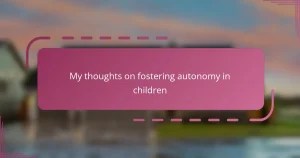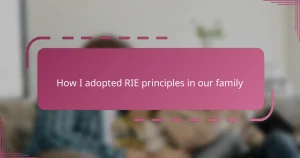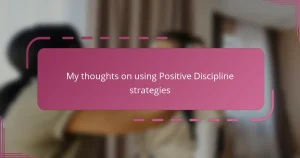Key takeaways
- Authoritative parenting combines clear expectations with emotional responsiveness, fostering mutual respect and connection.
- Empathy plays a critical role in parenting by helping to validate children’s feelings, transforming discipline into an act of care rather than control.
- Practical strategies include naming emotions, asking open-ended questions, and pausing before responding to enhance communication and understanding.
- Balancing authority and empathy can improve children’s cooperation and trust, making discipline a shared goal rather than a battle.
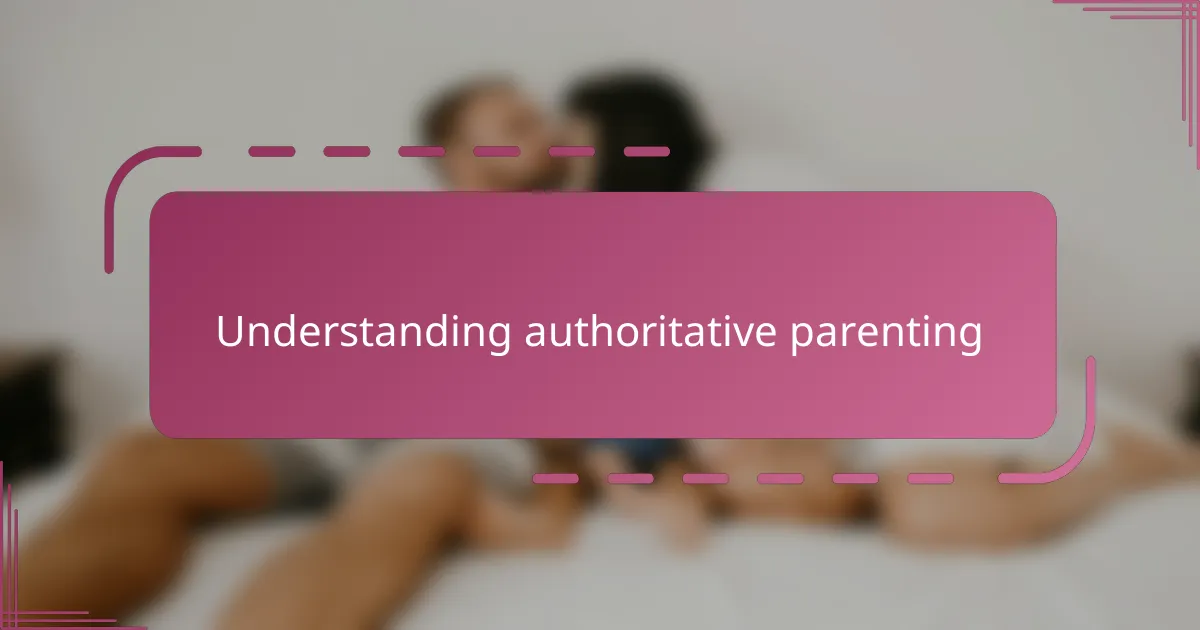
Understanding authoritative parenting
Authoritative parenting, as I’ve come to understand it, strikes a delicate balance between setting clear rules and remaining emotionally responsive. It’s not about wielding control rigidly or letting kids run free, but rather guiding with both firmness and kindness. Have you ever noticed how children seem to thrive when they know the boundaries but also feel truly heard?
In my experience, embracing this parenting style meant learning to listen more deeply—to not just words, but feelings behind them. It’s easy to fall into the trap of enforcing rules without empathy, but authoritative parenting challenges you to meet your child’s needs while still holding consistent expectations. This approach felt more rewarding because it fostered mutual respect instead of resentment.
Thinking back, I recall moments when patience was tested, but pausing to understand my child’s perspective brought us closer. That’s the emotional insight I value most: authoritative parenting isn’t about perfect discipline; it’s about connection. Have you found that empathy softens even the hardest rules? I certainly have.
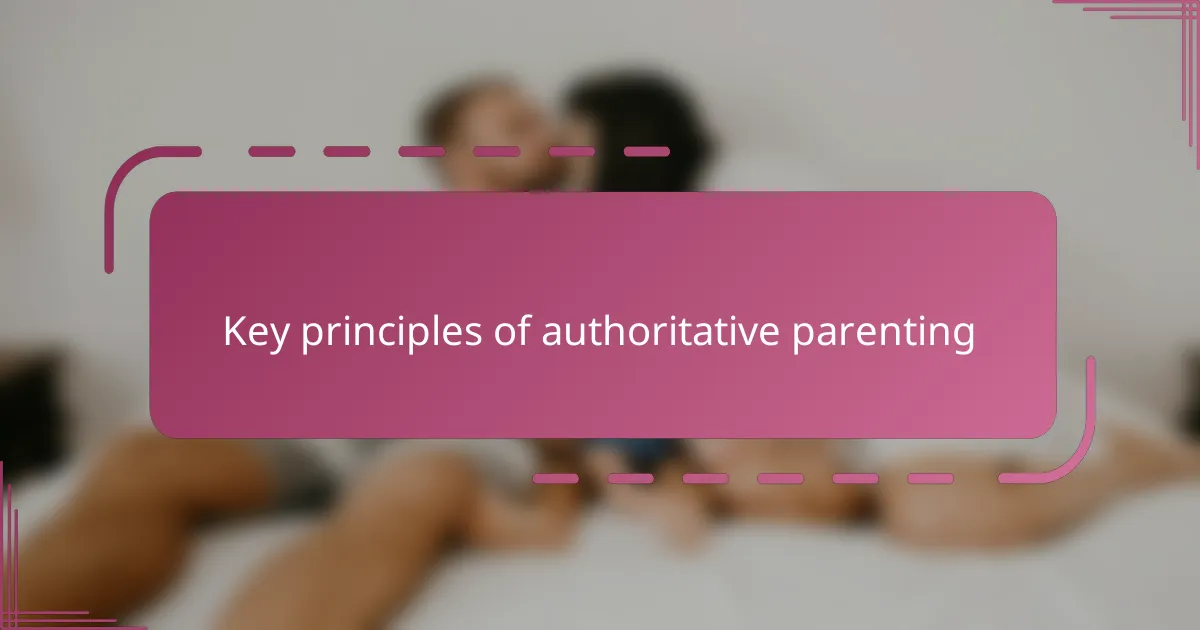
Key principles of authoritative parenting
At the heart of authoritative parenting lies clear, consistent expectations paired with warmth and understanding. I remember struggling initially to maintain firmness without sounding harsh—finding that sweet spot where my child feels guided but not controlled was a game changer. Have you ever noticed how children respond better when rules come with explanations rather than just commands?
Another principle I value is the emphasis on open communication. This isn’t just about laying down the law but inviting dialogue, which made me realize how often I underestimated my child’s ability to express feelings and negotiate. When I took the time to truly listen, our interactions shifted from battles to conversations, deepening our trust.
Lastly, this style promotes independence within a secure framework. It struck me how empowering it is for children to have the freedom to make choices while knowing their parents are steady anchors. Watching my child grow confident under these balanced conditions reinforced how vital it is to blend guidance with empathy every step of the way.
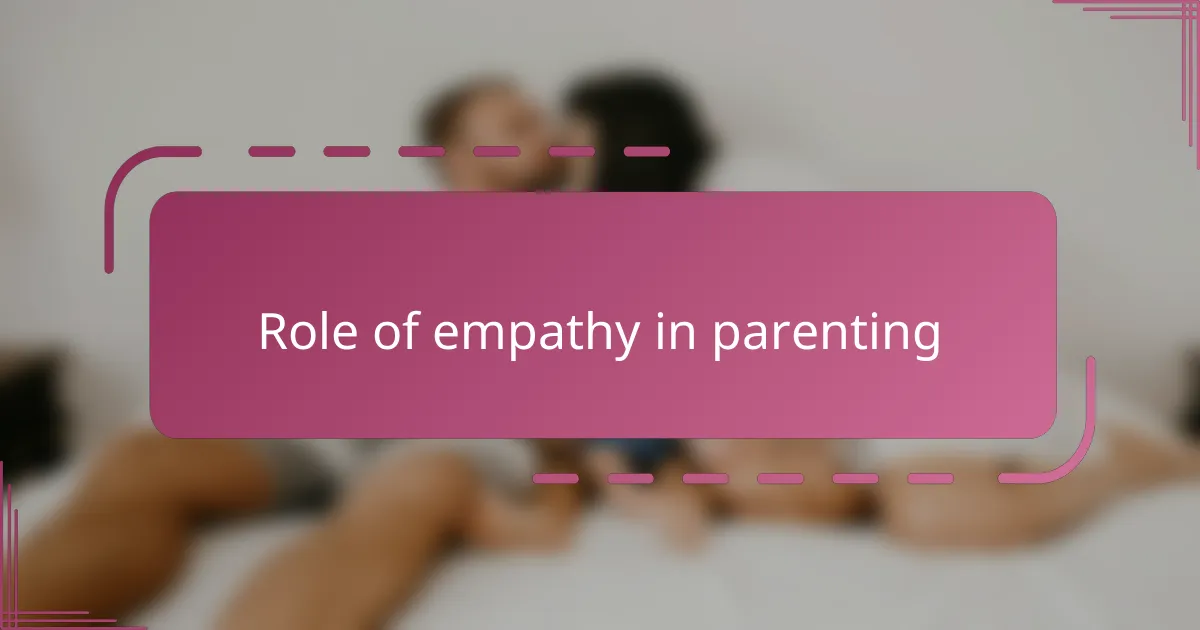
Role of empathy in parenting
Empathy, in my experience, is the heartbeat of effective parenting. When I began to genuinely tune into my child’s emotions, I saw how it transformed not just our conversations, but the way my child responded to guidance. Have you ever noticed how a simple moment of understanding can calm a storm of frustration?
It’s fascinating how empathy allows us to step into our child’s world without losing our role as parents. I found that by validating feelings—even when enforcing rules—I built a bridge of trust that made discipline feel less like punishment and more like care. Isn’t it remarkable how children open up when they feel truly seen?
Sometimes, the most challenging moments have been the ones where empathy made the biggest difference. Instead of reacting to misbehavior with frustration, pausing to understand the “why” behind it has helped me respond with patience and insight. This practice didn’t come naturally at first, but it became a powerful way to nurture connection and growth.
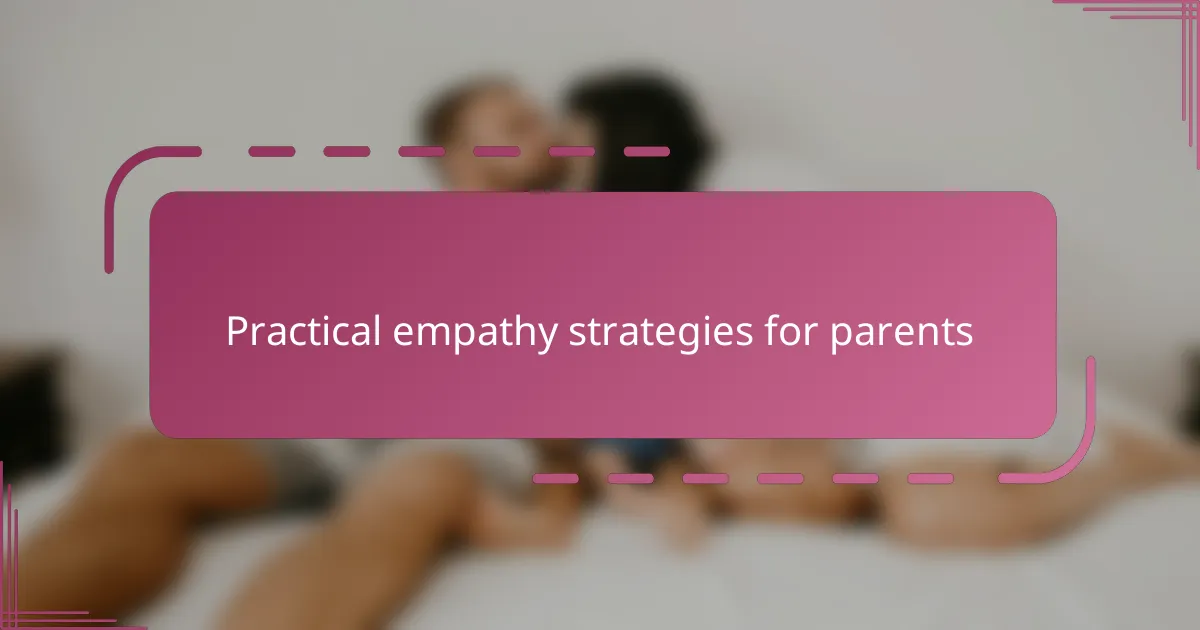
Practical empathy strategies for parents
One practical strategy I embrace is simply naming the emotions I see in my child. Saying something like, “You seem really upset about this,” not only helps me validate their feelings but also teaches them to recognize and express emotions. Have you tried putting feelings into words? It can turn a tense moment into an opportunity for connection.
Another approach that’s helped me is asking gentle, open-ended questions instead of jumping to solutions. When my child faces a problem, I might ask, “What do you think would help right now?” This invites them to be part of the conversation and respects their growing independence. I’ve noticed it reduces resistance and opens doors for honest dialogue.
Finally, I’ve learned the power of pausing before responding, especially when emotions run high. Taking a breath allows me to check in with my own feelings and approach the situation with patience rather than frustration. It’s not always easy, but this small pause often changes the entire tone of our interaction—don’t you find that moments of calm can reshape the day?
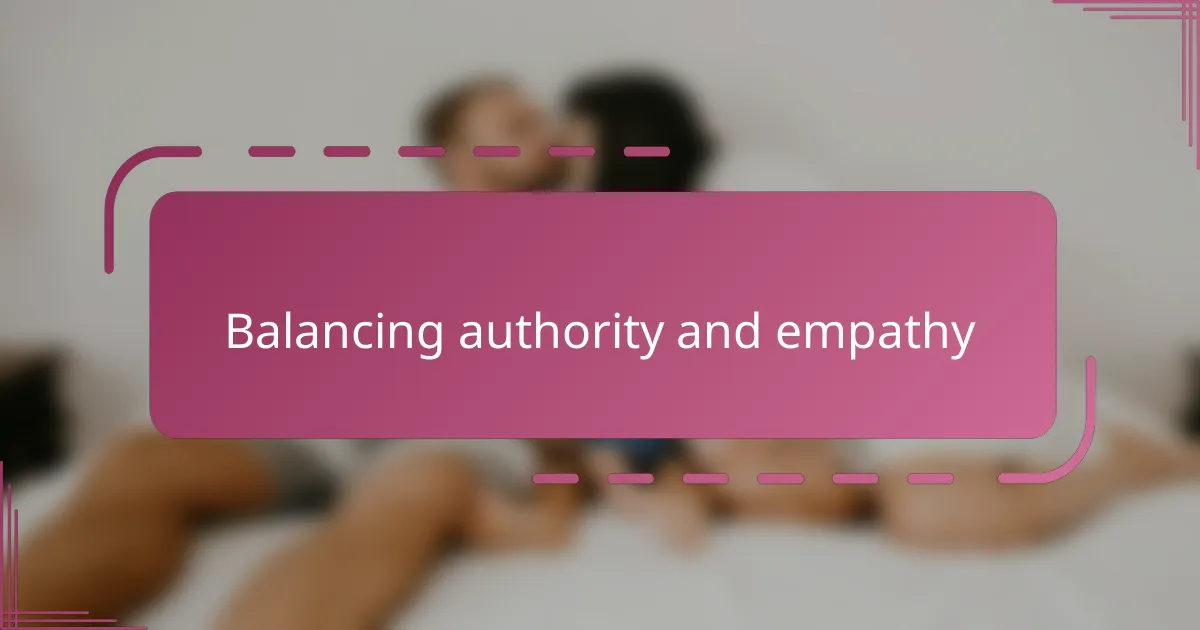
Balancing authority and empathy
Balancing authority and empathy has often felt like walking a tightrope for me. There were times when I worried that showing too much empathy might weaken my authority, but I learned that children actually respond better when firmness is tempered with genuine understanding. Have you ever noticed how a calm, empathetic tone can make even tough rules feel fair?
What really shifted my perspective was realizing that empathy doesn’t mean giving in; it means holding boundaries with care. For instance, when my child was reluctant to do homework, instead of insisting harshly, I acknowledged their frustration and then gently reinforced the expectation. That blend of listening and leading made both of us feel respected and connected.
I also found that maintaining clear authority while staying emotionally attuned requires constant adjustments. It’s not a fixed formula but an ongoing dance where I check in with myself and my child. Have you tried reflecting on your own reactions before setting limits? That pause can be the secret to balancing strength with sensitivity.
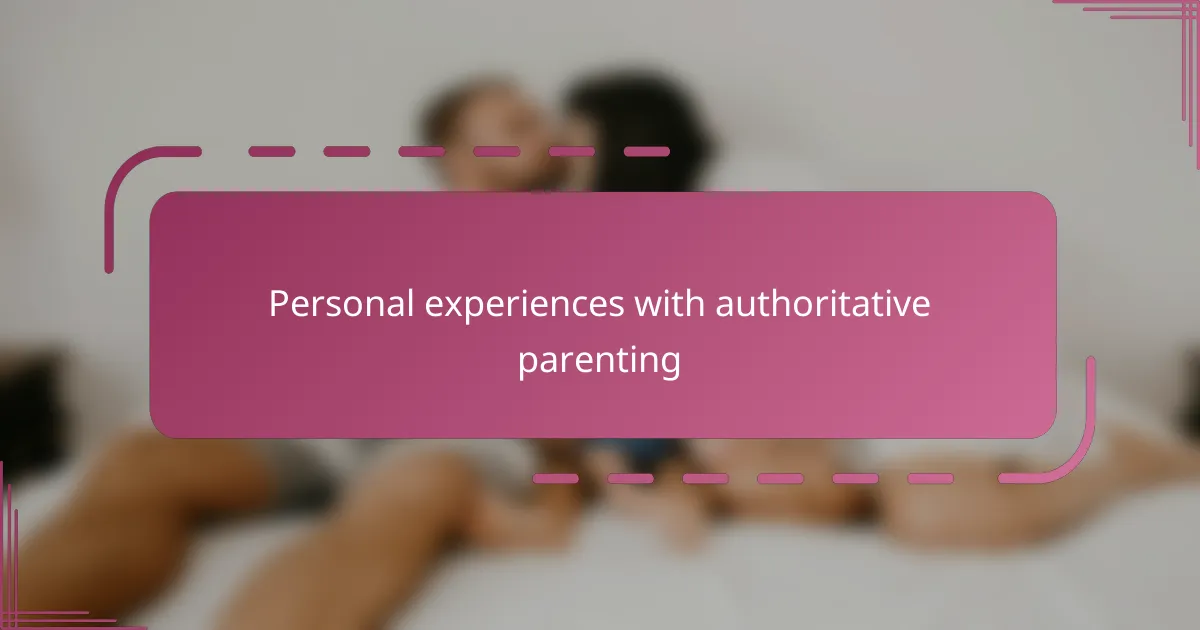
Personal experiences with authoritative parenting
There was a time when I struggled to enforce rules without sounding too harsh, but shifting to authoritative parenting helped me see discipline as an act of care rather than control. I remember a moment when my child resisted bedtime, and instead of demanding compliance, I acknowledged their need for more wind-down time. That small change made bedtime smoother and left both of us feeling understood—have you experienced how a little empathy can transform daily struggles?
Another experience that stands out is how this approach deepened our trust over time. By consistently explaining the reasons behind expectations, my child started to ask questions and share their thoughts more openly. It amazed me how much more cooperative they became when they felt trusted and respected—doesn’t that show the power of combining rules with warmth?
Sometimes, I caught myself slipping into old habits of reacting quickly to misbehavior, only to realize later that pausing and tuning into my child’s feelings made all the difference. When I took that moment to truly listen, I not only deescalated tension but also modeled emotional awareness. Have you found that patience coupled with understanding can turn conflicts into opportunities for growth? I certainly have.
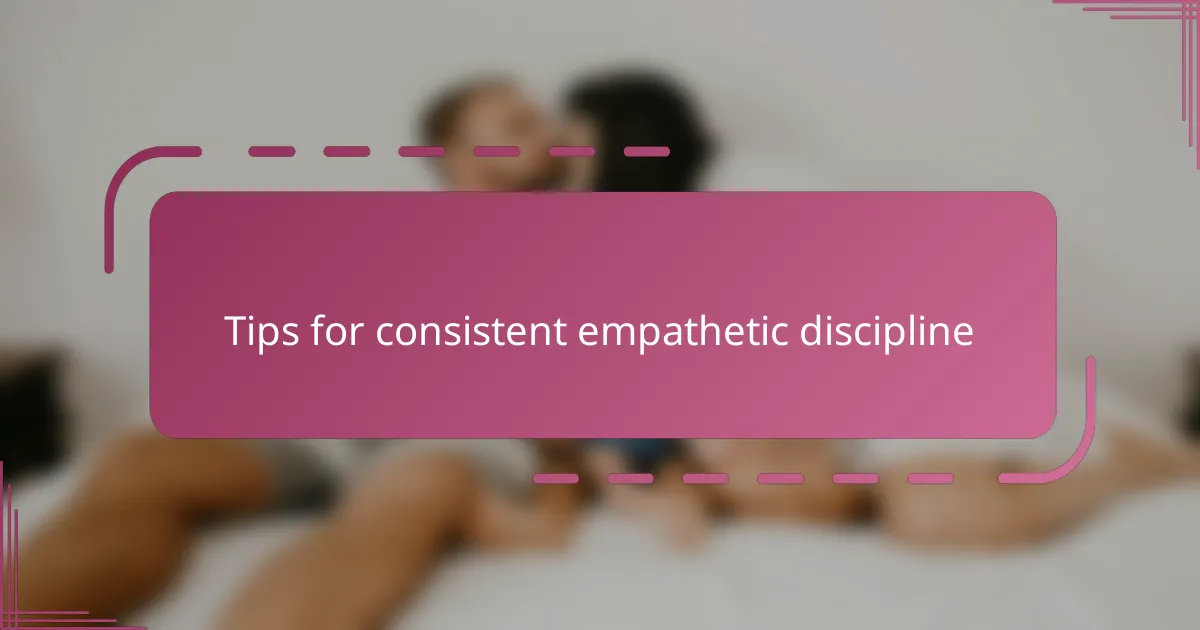
Tips for consistent empathetic discipline
One tip that’s been a game changer for me is consistency—not just in enforcing rules, but in how I respond emotionally each time. I used to struggle with staying patient when my child repeated the same misbehavior, but focusing on steady empathy helped me remember that it’s about teaching, not punishing. Have you noticed that kids actually thrive when they know what to expect from us emotionally as much as from our rules?
I also make it a point to explain the “why” behind each rule with compassion. When my child understands the reason and feels their feelings are considered, resistance softens, and cooperation grows. Could it be that taking a moment to connect emotionally makes discipline feel less like a battle and more like a shared goal?
Another thing I’ve found invaluable is checking in with myself before responding—pausing to recognize my own frustrations so they don’t spill over. It’s not easy, especially when emotions run high, but these pauses have often turned potential conflicts into moments of connection. Have you tried that subtle shift? For me, it’s been like pressing a reset button that opens the door to more empathetic discipline.
